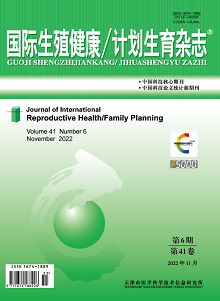Objective: To compare the anthropometric indexes, sex hormones and metabolism of infertile patients with polycystic ovary syndrome (PCOS) at different degrees of oligomenorrhea, and to analyze the pregnancy outcomes after the ovulation induction with acupuncture-assisted clomiphene protocol. Methods: 948 participants with oligomenorrhea in PCOSAct clinical trial were selected. According to the days of menstrual cycle, they were divided into 4 groups: 423 cases in the group A (36-59 days), 311 cases in the group B (60-89 days), 167 cases in the group C (90-179 days) and 47 cases in the group D (≥180 days). The anthropometric indexes, sex hormones, glucose and lipid metabolism were compared, and the pregnancy outcomes were analyzed. Results: The longer the menstrual cycle, the higher the body mass index, waist-hip ratio, black acanthosis score, right ovarian volume, luteinizing hormone, luteinizing hormone/follicle-stimulating hormone, total testosterone, free testosterone, free androgen index, fasting plasma glucose, fasting insulin, homeostatic model assessment values for insulin resistance, triglyceride and apolipoprotein B (all P<0.05). The incidences of insulin resistance and metabolic syndrome were also increased with the extension of menstrual cycle (both P<0.05), while the sex hormone-binding globulin, ovulation rate and biochemical pregnancy rate were decreased (all P<0.05). There were no significant differences in the clinical pregnancy rate, live birth rate and the incidence of perinatal adverse events among the groups (all P>0.05). Multivariate binary logistic regression analysis showed that the menstrual cycle was an independent influencing factor for ovulation and biochemical pregnancy in PCOS patients. Conclusions: The more severe the degree of oligomenorrhea (especially more than 90 days), the more prone to endocrine, glucose and lipid metabolism disorders. Oligomenorrhea may affect adversely the pregnancy outcomes.

